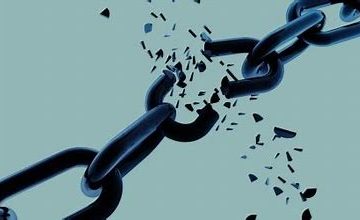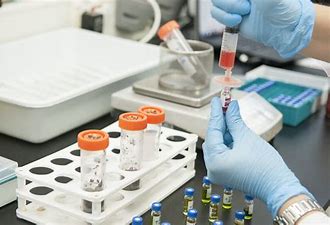This has been taken from the website called Not Milk. I have broken the letter up as it’s quite long and very rich in terms of what we need to know. Small doses may help in terms of taking it in. Thus I’m going to produce a series of posts based on this letter. Watch this space 🙂
Leukaemia? Lymphoma? This may be the worst–brace yourself!
I hate to tell you this, but the bovine leukaemia virus is found in more than three of five dairy cows in the United States! This involves about 80% of dairy herds. Unfortunately, when the milk is pooled, a very large percentage of all milk produced is contaminated (90 to 95 per cent). Of course the virus is killed in pasteurisation– if the pasteurisation was done correctly. What if the milk is raw? In a study of randomly collected raw milk samples the bovine leukaemia virus was recovered from two-thirds. I sincerely hope that the raw milk dairy herds are carefully monitored when compared to the regular herds. (Science 1981; 213:1014).
This is a world-wide problem. One lengthy study from Germany deplored the problem and admitted the impossibility of keeping the virus from infected cows’ milk from the rest of the milk. Several European countries, including Germany and Switzerland, have attempted to “cull” the infected cows from their herds. Certainly the United States must be the leader in the fight against leukemic dairy cows, right? Wrong! We are the worst in the world with the former exception of Venezuela according to Virgil Hulse MD, a milk specialist who also has a B.S. in Dairy Manufacturing as well as a Master’s degree in Public Health.
As mentioned, the leukaemia virus is rendered inactive by pasteurisation. Of course. However, there can be Chernobyl like accidents. One of these occurred in the Chicago area in April, 1985. At a modern, large, milk processing plant an accidental “cross connection” between raw and pasteurized milk occurred. A violent salmonella outbreak followed, killing 4 and making an estimated 150,000 ill. Now the question I would pose to the dairy industry people is this: “How can you assure the people who drank this milk that they were not exposed to the ingestion of raw, unkilled, bully active bovine leukaemia viruses?” Further, it would be fascinating to know if a “cluster” of leukaemia cases blossoms in that area in 1 to 3 decades. There are reports of “leukaemia clusters” elsewhere, one of them mentioned in the June 10, 1990 San Francisco Chronicle involving Northern California.
What happens to other species of mammals when they are exposed to the bovine leukaemia virus? It’s a fair question and the answer is not reassuring. Virtually all animals exposed to the virus develop leukaemia. This includes sheep, goats, and even primates such as rhesus monkeys and chimpanzees. The route of transmission includes ingestion (both intravenous and intramuscular) and cells present in milk. There are obviously no instances of transfer attempts to human beings, but we know that the virus can infect human cells in vitro. There is evidence of human antibody formation to the bovine leukaemia virus; this is disturbing. How did the bovine leukaemia virus particles gain access to humans and become antigens? Was it as small, denatured particles?
If the bovine leukaemia viruses causes human leukaemia, we could expect the dairy states with known leukemic herds to have a higher incidence of human leukaemia. Is this so? Unfortunately, it seems to be the case! Iowa, Nebraska, South Dakota, Minnesota and Wisconsin have statistically higher incidence of leukaemia than the national average. In Russia and in Sweden, areas with uncontrolled bovine leukaemia virus have been linked with increases in human leukaemia. I am also told that veterinarians have higher rates of leukaemia than the general public. Dairy farmers have significantly elevated leukaemia rates. Recent research shows lymphocytes from milk fed to neonatal mammals gain access to bodily tissues by passing directly through the intestinal wall.
An optimistic note from the University of Illinois, Ubana from the Department of Animal Sciences shows the importance of one’s perspective. Since they are concerned with the economics of milk and not primarily the health aspects, they noted that the production of milk was greater in the cows with the bovine leukaemia virus. However when the leukaemia produced a persistent and significant lymphocytosis (increased white blood cell count), the production fell off. They suggested “a need to re-evaluate the economic impact of bovine leukaemia virus infection on the dairy industry”. Does this mean that leukaemia is good for profits only if we can keep it under control? You can get the details on this business concern from Proc. Nat. Acad. Sciences, U.S. Feb. 1989. I added emphasis and am insulted that a university department feels that this is an economic and not a human health issue. Do not expect help from the Department of Agriculture or the universities. The money stakes and the political pressures are too great. You’re on you own.
What does this all mean? We know that virus is capable of producing leukaemia in other animals. Is it proven that it can contribute to human leukaemia (or lymphoma, a related cancer)? Several articles tackle this one:
1.Epidemiologic Relationships of the Bovine Population and Human Leukaemia in Iowa. Am Journal of Epidemiology 112 (1980):80 2.Milk of Dairy Cows Frequently Contains a Leukemogenic Virus. Science 213 (1981): 1014 3.Beware of the Cow. (Editorial) Lancet 2 (1974):30 4. Is Bovine Milk A Health Hazard? Paediatrics; Suppl. Feeding the Normal Infant. 75:182-186; 1985
In Norway, 1422 individuals were followed for 11 and a half years. Those drinking 2 or more glasses of milk per day had 3.5 times the incidence of cancer of the lymphatic organs. British Med. Journal 61:456-9, March 1990.
One of the more thoughtful articles on this subject is from Allan S. Cunningham of Cooperstown, New York. Writing in the Lancet, November 27, 1976 (page 1184), his article is entitled, “Lymphomas and Animal-Protein Consumption”. Many people think of milk as A” liquid meat” and Dr. Cunningham agrees with this. He tracked the beef and dairy consumption in terms of grams per day for a one year period, 1955-1956., in 15 countries. New Zealand, United States and Canada were highest in that order. The lowest was Japan followed by Yugoslavia and France. The difference between the highest and lowest was quite pronounced: 43.8 grams/day for New Zealanders versus 1.5 for Japan. Nearly a 30-fold difference! (Parenthetically, the last 36 years have seen a startling increase in the amount of beef and milk used in Japan and their disease patterns are reflecting this, confirming the lack of ‘genetic protection’ seen in migration studies. Formerly the increase in frequency of lymphomas in Japanese people was only in those who moved to the USA)!
An interesting bit of trivia is to note the memorial built at the Gyokusenji Temple in Shimoda, Japan. This marked the spot where the first cow was killed in Japan for human consumption! The chains around this memorial were a gift from the US Navy. Where do you suppose the Japanese got the idea to eat beef? The year? 1930.
Cunningham found a highly significant positive correlation between deaths from lymphomas and beef and dairy ingestion in the 15 countries analysed. A few quotations from his article follow:
The average intake of protein in many countries is far in excess of the recommended requirements. Excessive consumption of animal protein may be one co-factor in the causation of lymphomas by acting in the following manner. Ingestion of certain proteins results in the adsorption of antigenic fragments through the gastrointestinal mucous membrane.
This results in chronic stimulation of lymphoid tissue to which these fragments gain access “Chronic immunological stimulation causes lymphomas in laboratory animals and is believed to cause lymphoid cancers in men.” The gastrointestinal mucous membrane is only a partial barrier to the absorption of food antigens, and circulating antibodies to food protein is commonplace especially potent lymphoid stimulants. Ingestion of cows’ milk can produce generalized lymphadenopathy, hepatosplenomegaly, and profound adenoid hypertrophy. It has been conservatively estimated that more than 100 distinct antigens are released by the normal digestion of cows’ milk which evoke production of all antibody classes [This may explain why pasteurized, killed viruses are still antigenic and can still cause disease.
Here’s more. A large prospective study from Norway was reported in the British Journal of Cancer 61 (3):456-9, March 1990. (Almost 16,000 individuals were followed for 11 and a half years). For most cancers there was no association between the tumour and milk ingestion. However, in lymphoma, there was a strong positive association. If one drank two glasses or more daily (or the equivalent in dairy products), the odds were 3.4 times greater than in persons drinking less than one glass of developing a lymphoma.
Read more about this in future blog posts. They wont have huge gaps between them so it wont be long. If you don’t want to keep checking this website, sign up here and receive notifications about new posts.



1 Comment
Heena Modi · September 18, 2008 at 5:21 pm
The Ethical Consumer (http://www.ethicalconsumer.org/FreeBuyersGuides/fooddrink/yoghurtdairysoya.aspx) reports that: –
Health issues
Dairy products have been linked to osteoporosis, heart disease, cancer, diabetes and a range of allergy related problem.
Despite the dairy industry’s claims that milk is an essential source of calcium, a diet high in dairy products may leach the body of more calcium than it provides.
Alternative calcium sources include green leafy vegetables such as broccoli and nuts and seeds such as brazil nuts and sesame seeds.
Comments are closed.